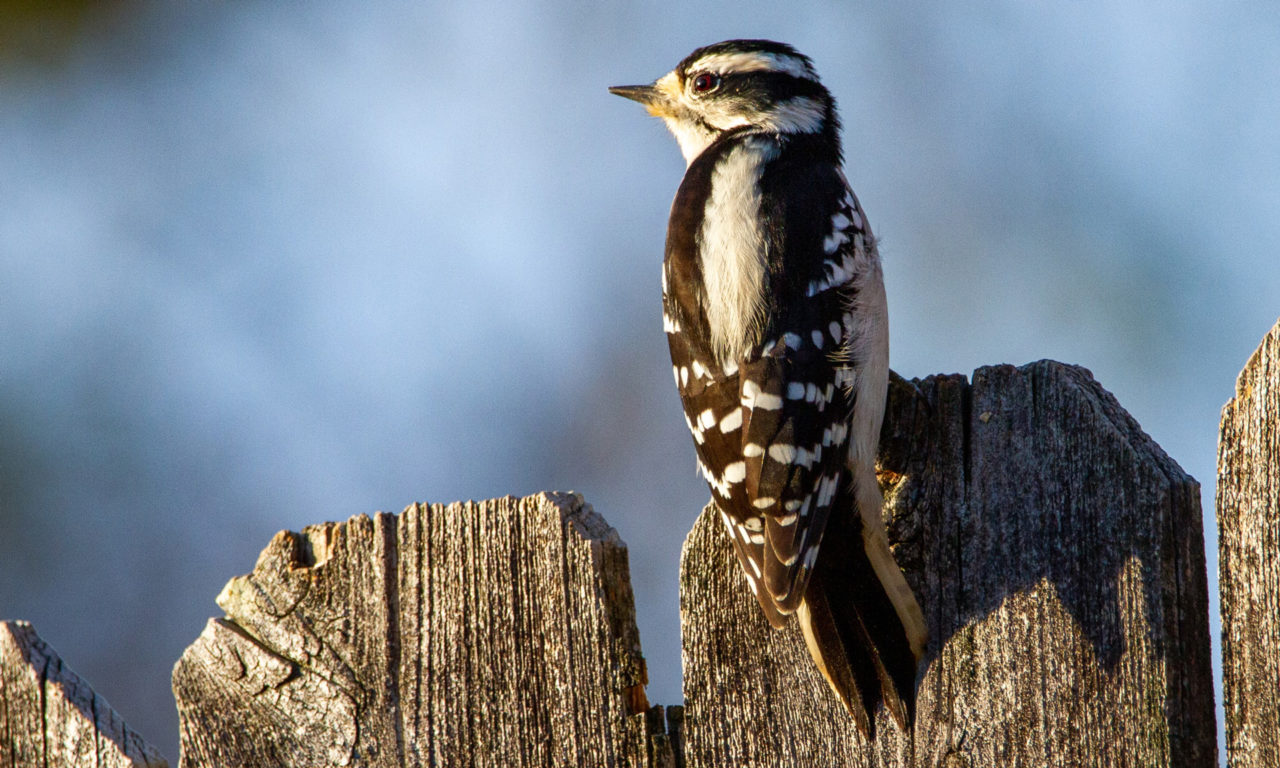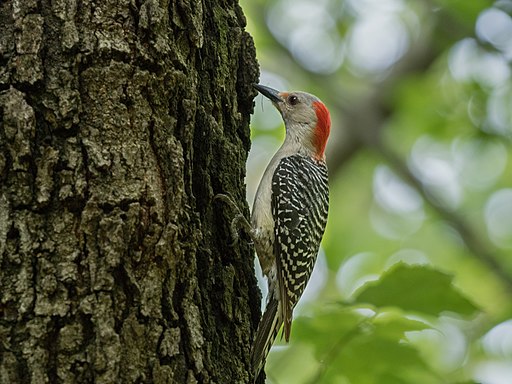Discovering Woodpeckers in Florida: Species Diversity and Nature
Discovering Woodpeckers in Florida: Species Diversity and Nature
Blog Article
Woodpeckers: A Comprehensive Overview to Recognizing These Special Birds
Woodpeckers, with their distinct habits and physical characteristics, have actually long captivated the curiosity of ornithologists and nature fanatics alike. As we check out the detailed composition, varied species, and eco-friendly importance of woodpeckers, a deeper gratitude for these one-of-a-kind birds and the secrets they hold unravels.

Woodpeckers' Drumming Habits
Woodpeckers display a balanced and exact drumming actions that offers different crucial features in their day-to-days live. This habits is mostly connected with interaction, area defense, and foraging. The distinctive drumming sound is developed by the quick pecking of their beaks versus difficult surfaces such as tree trunks, branches, or also steel items.
Communication is an important aspect of woodpecker actions, and drumming plays a substantial function in this process. Woodpeckers make use of drumming to develop their existence, attract friends, and preserve contact with their companions and children. The frequency, strength, and duration of drumming series communicate particular messages to other woodpeckers in the location.
Along with interaction, woodpeckers utilize drumming behavior for region defense. Woodpeckers in Florida. The loud and recurring drumming offers as a cautioning to potential trespassers, signaling that the location is already asserted. By establishing their region with drumming, woodpeckers reduce the chance of disputes over beneficial resources such as food and nesting websites
Furthermore, woodpeckers additionally utilize drumming as a foraging strategy. The rhythmic pecking aids them locate pests hiding under the bark of trees by creating resonances that disrupt the victim's concealment. This habits showcases the flexibility and resourcefulness of woodpeckers in using their drumming skills for several essential functions.
Unique Adaptations for Tree Climbing
Having actually mastered the art of drumming to interact, safeguard territory, and forage, woodpeckers have progressed unique adaptations that promote their remarkable climbing capabilities in their arboreal environments. One key adaptation is their customized feet. Woodpeckers have zygodactyl feet, with two toes aiming ahead and two toes directing backward. This plan offers a solid grip on the vertical surfaces of trees, enabling them to stick easily while foraging for insects or drumming. Furthermore, woodpeckers possess rigid tail plumes that work as a prop to support their bodies as they climb. These tail feathers offer security and equilibrium, making it possible for woodpeckers to steer up tree trunks with precision and agility.
Moreover, woodpeckers have effective neck muscle mass and a special skull structure that aid in their climbing up capacities. Their solid neck muscle mass enable them to quickly peck at tree bark without experiencing whiplash, while their thick head and tiny mind function as shock absorbers, safeguarding them from the impact of repeated drumming. These adjustments jointly allow woodpeckers to navigate the upright globe of trees with effectiveness and grace.

Duty of Woodpeckers in Ecosystems
By foraging for bugs under the bark of trees, woodpeckers assist control bug populaces, stopping episodes that might hurt the general health and wellness of the forest. Furthermore, woodpeckers produce cavities in trees my sources that serve as essential nesting sites for a range of other bird species, promoting biodiversity within the community.
Furthermore, the drumming and vocalizations of woodpeckers play a crucial function in communication and territory facility. view publisher site These noises not only serve to attract friends yet likewise assist define boundaries in between different woodpecker territories, reducing problems and advertising a harmonious coexistence within the woodland community. Overall, the existence of woodpeckers in forest ecosystems highlights their relevance as keystone types, influencing the characteristics and operating of these habitats in multifaceted means.
Anatomy: Specialized Beaks and Feet
In the detailed web of woodland ecosystems, the specialized beaks and feet of woodpeckers are crucial adaptations that allow them to fulfill their vital ecological functions. Woodpeckers have distinct physiological features that are particularly made to aid them in their foraging and nesting habits.
One of the most distinctive function of woodpeckers is their solid, chisel-shaped beaks. These beaks are perfectly adapted for boring right into wood to discover bugs, larvae, and sap surprise below the bark of trees. The strong muscular tissues and sturdy structure of their beaks enable woodpeckers to eat a price of up to 20 times per second without triggering damage to their heads.
In addition, woodpeckers have actually specialized feet that aid in their acrobatic climbing capabilities. Their feet have 2 toes aiming onward and 2 toes pointing backward, offering a solid grasp on upright surface areas (Woodpeckers in Florida). This unique foot arrangement, along with rigid tail feathers that function as an encouraging prop, permits woodpeckers to stick to tree trunks and branches with convenience while they search for food or excavate nesting cavities
Woodpecker Species Diversity
Woodpeckers are a varied team of birds discovered across numerous environments worldwide, with over 200 recognized varieties showing adaptations to different settings. Woodpeckers have evolved to live in a variety of environments, from woodlands and forests to grasslands and deserts, each offering distinct challenges that have actually influenced the advancement of unique woodpecker species.
An additional contributing variable to woodpecker types diversity is their specialized feeding actions. Different varieties have advanced to make use of numerous food sources, such as pests, tree sap, fruits, and nuts, resulting in the growth of certain adjustments in beak shape, dimension, and strength. These adjustments enable woodpeckers to forage successfully in their respective environments, reducing competitors amongst species and advertising niche differentiation. In addition, geographic seclusion and historic factors have actually played a role fit the circulation and diversity my sources of woodpecker types, bring about the vast variety of specialized adaptations seen in these interesting birds.

Final Thought
In final thought, woodpeckers are fascinating birds that display unique drumming habits, specialized adjustments for tree climbing, and play essential duties in communities. With a varied range of woodpecker types found worldwide, these birds are vital for maintaining the health and wellness and equilibrium of forests and forests.
Report this page